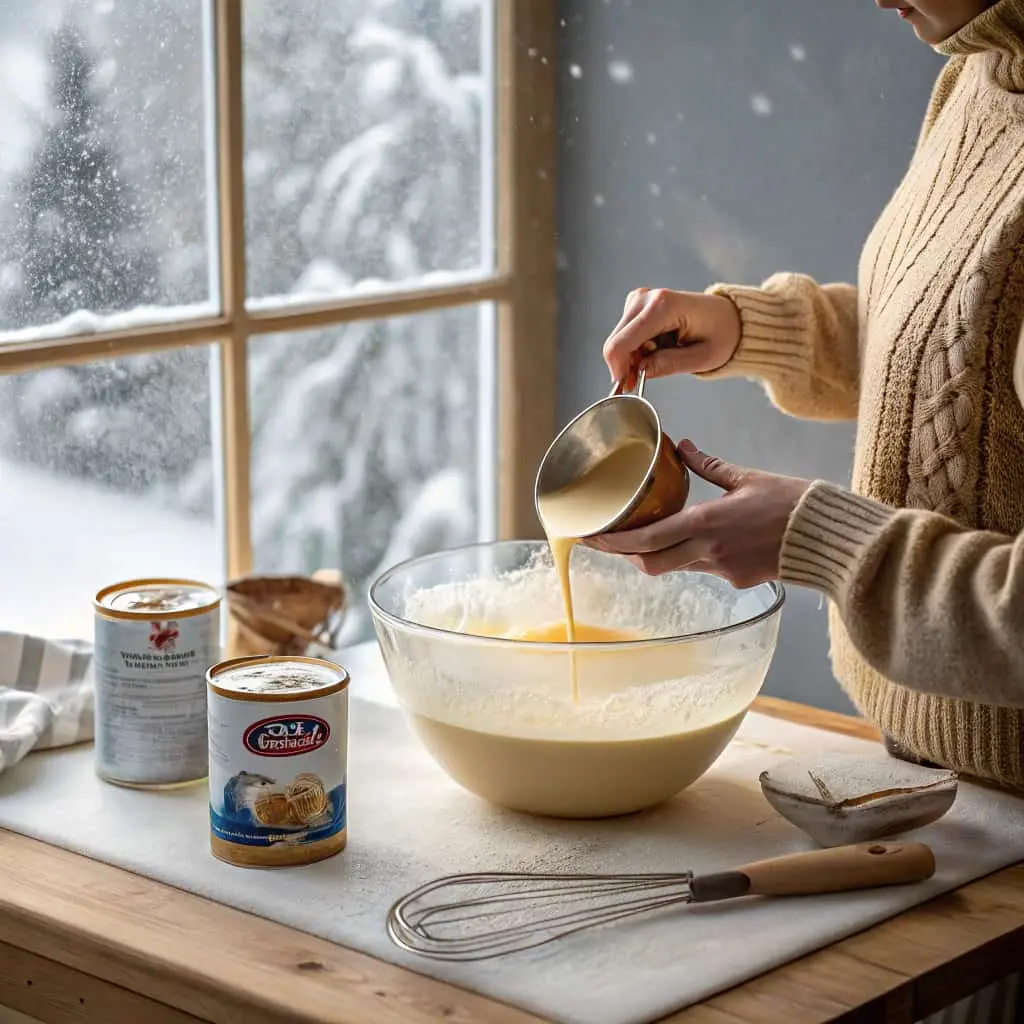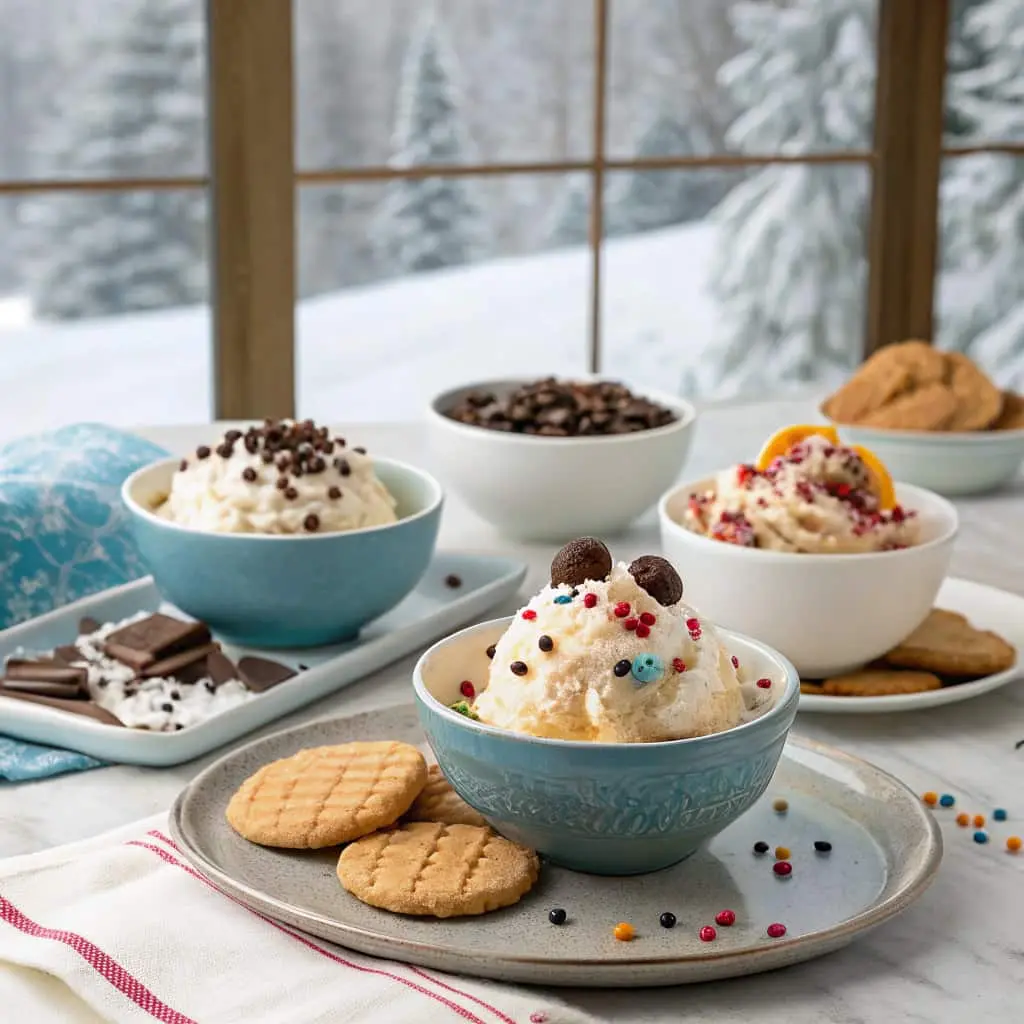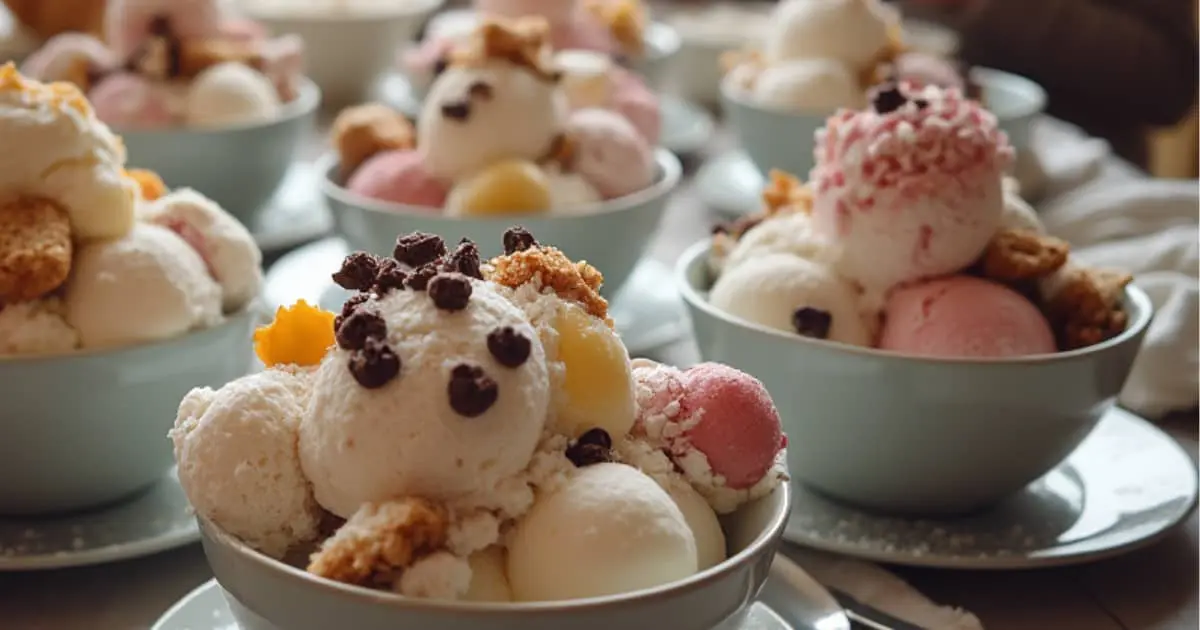When those first heavy snowflakes begin to fall, there’s a certain childhood excitement that returns to us all. For me, it was always the promise of my grandmother’s snow cream that had me pressing my nose against the window, eagerly awaiting enough accumulation. But finding truly clean snow and making the perfect consistency can be challenging. That’s why I’ve perfected this ultimate snow cream recipe that addresses all those concerns while delivering a deliciously nostalgic treat that’s ready in minutes. Whether you’re introducing your children to this magical winter tradition or rediscovering it yourself, this guide gives you everything you need for success.
Table of Contents
Table of Contents
What is Snow Cream Recipe?
Snow cream (sometimes called snow ice cream) is a simple homemade frozen dessert made by combining fresh, clean snow with sweetened milk and flavoring. This delightful winter treat dates back centuries and appears in recipe books from the early 1800s, though families have likely been making versions of it for much longer. Learn more about the history of ice cream.
Regional variations exist across snow-prone areas. In the American South, it’s often made with sweetened condensed milk, while northern states might use maple syrup as a sweetener. Some European traditions incorporate egg yolks for a richer custard-like base.
What makes snow cream special isn’t just its taste but the experience of creating something magical from nature itself. It transforms an ordinary snowfall into a memory-making opportunity that connects generations. Unlike commercial ice cream, each batch is unique to the snow that fell that day, making it impossible to perfectly replicate—and that’s part of its charm.
Finding CLEAN Snow (Safety First)
This section deserves special attention! The foundation of safe, delicious snow cream starts with properly sourced snow.
To collect clean snow:
- Wait until at least 2 hours into a heavy snowfall before collecting
- Gather snow from elevated surfaces like a clean table or bowl set outside (never from the ground)
- Collect from undisturbed areas away from trees, buildings, and high-traffic areas
- Always use a clean container specifically designated for food collection
- Avoid yellow or discolored snow (this should go without saying!)
Place a large, clean bowl outside as soon as snow begins falling heavily. This ensures you’re collecting fresh precipitation rather than snow that has been sitting and potentially collecting contaminants. For more food safety tips, visit the CDC.
Safety Disclaimer: While properly collected snow is generally safe for consumption, those with compromised immune systems should exercise caution. If you have concerns about air quality in your area, consider skipping this activity during that time.
The Perfect Snow Cream Recipe
Ingredients:

- 8-10 cups of fresh, clean snow
- 1 14-oz can sweetened condensed milk
- 1 teaspoon pure vanilla extract
- Pinch of salt
- Optional: 2-3 tablespoons heavy cream (for extra richness)
Equipment:
- Large mixing bowl
- Measuring cups and spoons
- Spatula or wooden spoon
Instructions:

- Prepare your base mixture: In a large mixing bowl, combine the sweetened condensed milk, vanilla extract, and pinch of salt. If using heavy cream, add it now. Mix well until completely blended. (1 minute)
- Collect your snow: Using a clean container, gather 8-10 cups of fresh, clean snow following the safety guidelines above. Work quickly as the snow will begin to melt. (5 minutes)
- Combine gradually: Add snow to your milk mixture 2 cups at a time, gently folding it in with a spatula. Continue adding snow until you reach your desired consistency—it should resemble soft-serve ice cream. (3 minutes)
- Taste and adjust: Sample your creation and adjust sweetness or flavor as needed by adding more sweetened condensed milk or vanilla. (1 minute)
- Serve immediately: Snow cream melts quickly! Transfer to chilled bowls and enjoy right away. (1 minute). Check the USDA National Nutrient Database for details on the nutritional information of common ingredients.
Substitutions:
- Dairy-free option: Use 1 cup coconut cream mixed with ¼ cup maple syrup instead of sweetened condensed milk
- Sugar-free option: Use 1 cup heavy cream with sugar-free sweetener to taste
Nutrition Information (Per 1 cup serving):
| Nutrient | Amount |
| Calories | ~150-180 |
| Fat | 5g |
| Carbohydrates | 25g |
| Protein | 3g |
| Sugar | 24g |
Snow Cream Variations & Flavor Ideas
Once you’ve mastered the classic recipe, it’s time to get creative with your homemade snow cream flavors!
Classic Variations:
- Chocolate: Add 2-3 tablespoons of cocoa powder to the base mixture
- Strawberry: Mix in ¼ cup strawberry puree or 3 tablespoons strawberry preserves
- Cinnamon: Add 1 teaspoon ground cinnamon and a dash of nutmeg
Creative Flavor Combinations:
- Peanut Butter Cup: Fold in 3 tablespoons peanut butter and mini chocolate chips
- Maple Bacon: Add ¼ cup maple syrup and 2 tablespoons crispy bacon bits
- Coffee: Mix in 1 tablespoon instant coffee powder dissolved in 1 tablespoon hot water (cooled)
- Mint Chocolate: Add ½ teaspoon mint extract and mini chocolate chips
- Cookies & Cream: Fold in crushed chocolate sandwich cookies
Delicious Add-ins (add just before serving):
- Chocolate chips
- Sprinkles
- Chopped nuts
- Fresh fruit pieces
- Crushed cookies
- Caramel sauce
- Hot fudge
- Toasted coconut
For each variation, simply prepare your chosen flavoring agents, then mix them into the base before adding the snow. For swirl effects, add sauces after incorporating the snow, then gently fold once or twice to create marble patterns.
Tips & Tricks for the BEST Snow Cream
After years of perfecting snow cream recipes, I’ve discovered these professional tips that make all the difference:
Perfect Consistency
- Snow quality matters: Light, fluffy snow works best; wet, heavy snow can make a dense final product
- Add snow gradually: This prevents over-diluting your flavored base
- Work quickly: The entire process should take less than 10 minutes to prevent excessive melting
- Pre-chill your mixing bowl: Place it in the freezer for 15 minutes before starting
Sweetness Adjustment
- Different snowfalls have different moisture contents, which affects flavor concentration
- Start with less sweetener than you think you need—you can always add more
- Consider adding extracts or flavored syrups for sweetness and flavor simultaneously
Freezing & Storage
- Snow cream is best enjoyed fresh within 15 minutes of preparation
- If you must store leftovers, transfer to a shallow airtight container and freeze for up to 24 hours
- Re-whip frozen leftovers with a fork before serving to restore some of the original texture
Serving Suggestions

- Use chilled bowls to slow melting
- Create a “snow cream bar” with multiple toppings for a fun family activity
- Pair with warm cookies for a delightful temperature contrast
- Serve in waffle cones for a portable treat
Troubleshooting
- Too runny? Add more snow or freeze for 15 minutes, then stir
- Too icy? Add a splash more liquid ingredients and stir
- Too sweet? Balance with a small pinch of salt or add more plain snow
- Not sweet enough? Add honey or maple syrup by the teaspoon until perfect.
Conclusion
Snow cream recipe is a delightful and nostalgic treat that brings out the magic in a snowy day. By following this ultimate snow cream recipe and safety guidelines, you can create a fun and delicious experience for yourself and your loved ones, whether it’s your first time or a cherished family tradition. The best part? You can customize your snow cream with endless variations and creative toppings, making each batch unique to the snow that fell that day. So, next time the snow begins to fall, gather your ingredients, head outside, and enjoy the simple joy of making your very own snow cream. Happy snow day!
Frequently Asked Questions (FAQs)
What is snow cream made of?
Snow cream is typically made from fresh, clean snow mixed with sweetened milk (often sweetened condensed milk), vanilla extract, and sometimes a pinch of salt. Some recipes include heavy cream for extra richness. The basic recipe is simple, but the variations are endless!
Is snow cream just a southern thing?
While snow cream is particularly popular in the American South, it’s enjoyed in many snowy regions around the world. In the South, it’s a special treat because snow is less common, making it a celebrated occasion. Northern states, Canada, and European countries also have traditions of making snow-based desserts, though recipes and names may vary.
Is it safe to make snow cream?
When made with freshly fallen snow collected properly, snow cream is generally safe for most people. The key is collecting clean snow: wait until at least 2 hours into a heavy snowfall, use elevated surfaces like a clean bowl placed outside, and avoid areas near roads, trees, or buildings. People with compromised immune systems should exercise caution, and those in areas with poor air quality may want to skip this activity.
Do you put an egg in snow cream?
Traditional snow cream recipes typically don’t include eggs, but some variations (particularly European ones) do incorporate egg yolks for a richer, custard-like base. Pasteurized egg products are recommended for safety when you choose to use eggs. The most common American recipes use only snow, sweetened condensed milk, and vanilla extract without eggs.

